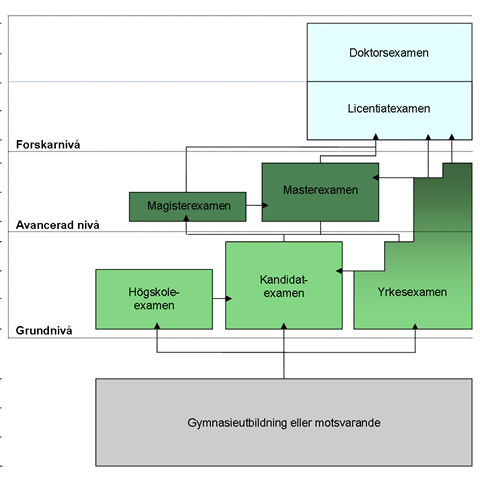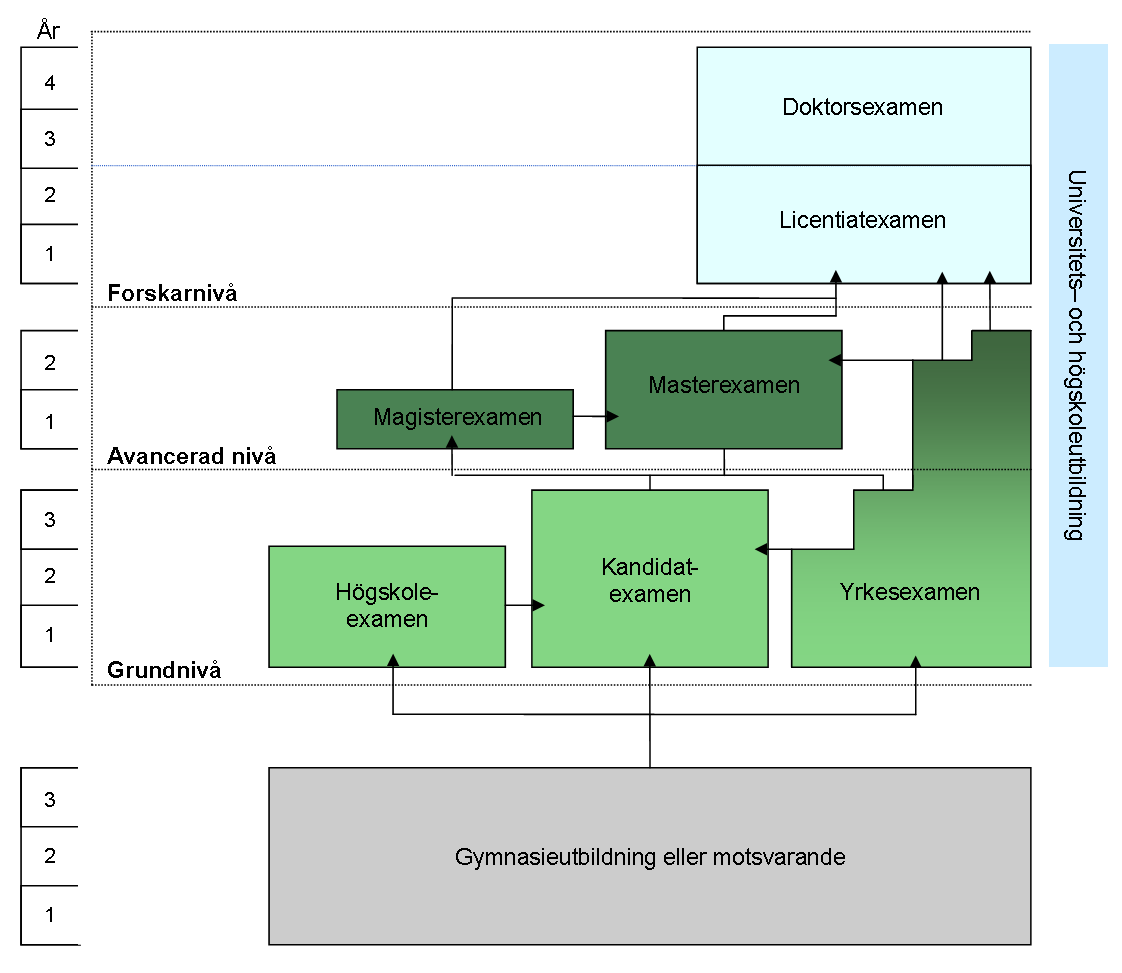Courses
Courses are the smallest building blocks of higher education. Each course must have a course syllabus, which among other things indicates the entry requirements, the objectives of the course, how it is assessed whether a student has achieved the objectives and which department is coordinating the course. Most courses have a grading scale of U (Fail), 3, 4 or 5. There are also grade criteria which indicate what is required for the different grades.
Courses may vary in terms of scope and provision: full-time/part-time, distance/on campus, daytime/evening, etc.
You can find your course syllabus by the course page or by first searching for your course using the course search tool and then clicking on the course heading in the hit list.
Programme
A degree programme leads to a specific degree. On some degree programmes you have the freedom to choose some of the courses yourself, while on others there is less freedom of choice. Some courses are only for students studying on a degree programme.
You must meet the entry requirements for each individual course, and this also applies to courses within a programme. Studying on a degree programme usually means full-time studies and teaching almost always takes place during the day.
Each programme must have a programme syllabus which is specified at faculty level. The programme syllabus indicates, among other things, the objectives for the programme as a whole, which courses form part of the programme and what requirements you must meet in order to be awarded the degree to which the programme leads. Here you can find your programme syllabus.
Independent projects
All degree programmes are completed with an independent project (degree project) where you can apply your knowledge, abilities and approach to a relevant issue within the field of your degree programme. You will usually report on the independent project both in writing and orally. Here you can find more information about independent projects/degree projects.
Credits
The scope of a programme, course or independent project is expressed in terms of credits. One semester’s full-time studies is 30 credits, a three-year degree programme is 180 credits, and so on.

